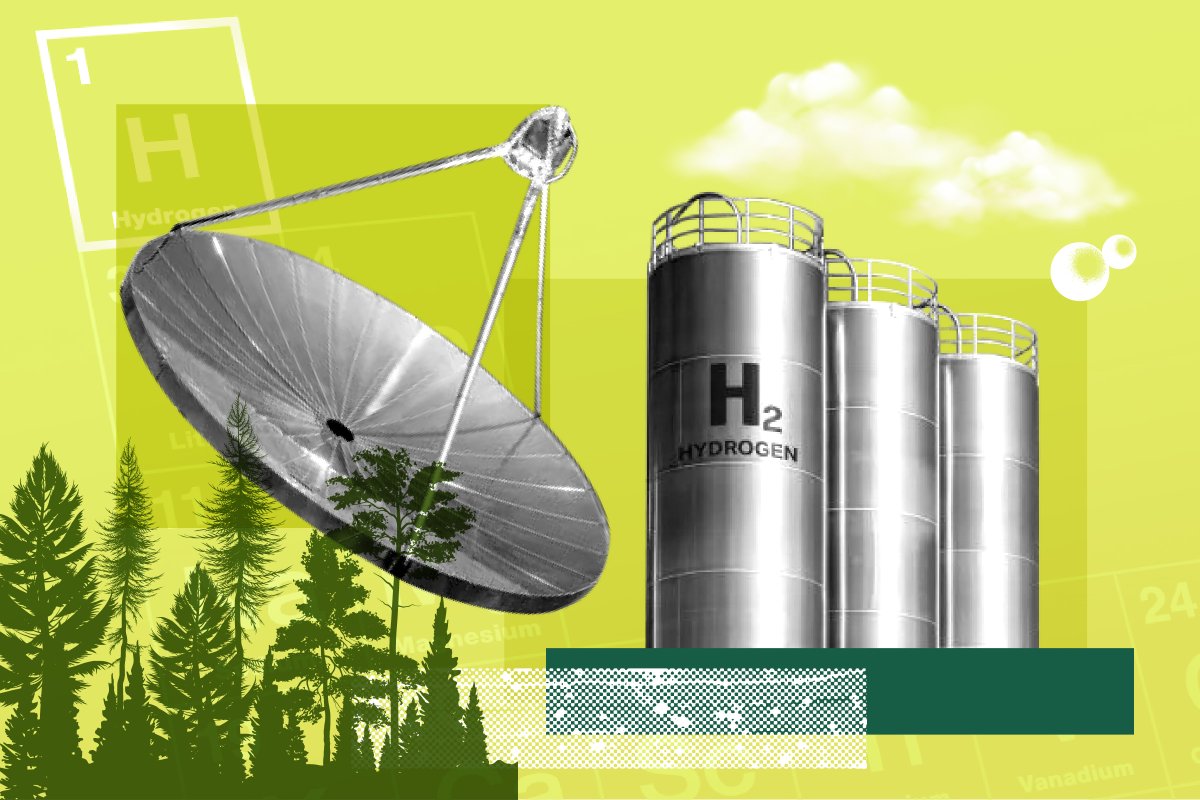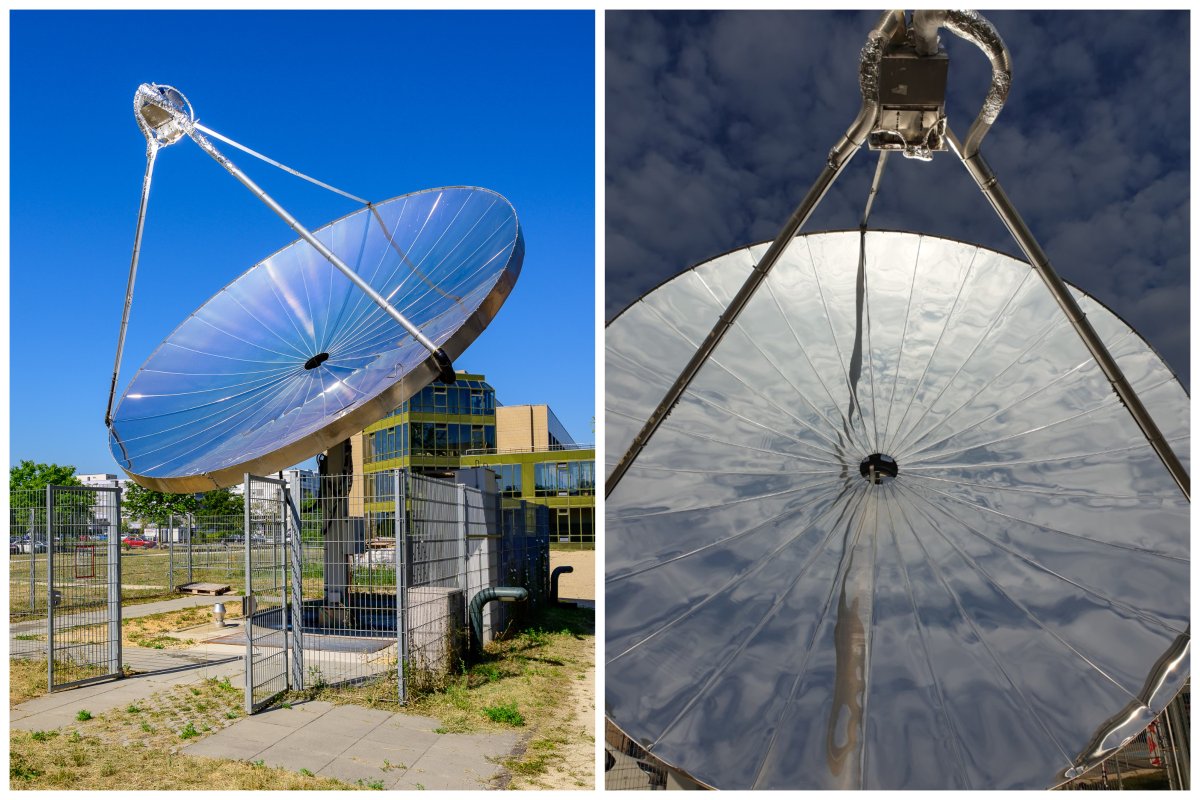An "artificial tree" has been erected at a campus in Switzerland to capture and store energy from the sun.
To the untrained eye, the device appears to be some sort of satellite dish. But the 23-foot-wide structure at the École Polytechnique fédérale de Lausanne (EPFL) is actually a major step towards overcoming one of the biggest obstacles in clean energy distribution: the problem of energy storage.
"Our system is directly storing solar energy into hydrogen," Sophia Haussener, head of the Laboratory of Renewable Energy Science and Engineering at the School of Engineering at EPFL, told Newsweek. "Also, it is in this form not connected to the grid, so it is 'relieving' the grid and could allow for decentralized applications."

In a single hour, more energy hits the Earth in the form of sunlight than is consumed by humans in an entire year, according to the U.S. Department of Energy. Solar panels allow us to capture some of this energy and convert it into electricity for immediate use. But the problem is, what do we do when the sun stops shining?
Storing electricity is difficult, and usually involves large, heavy batteries that take up space and mostly require rare and expensive metals in their manufacture. However, batteries are not the only means of storing energy.
Hydrogen can hold over 150 times more energy than a standard lithium-ion battery per kilogram, the Copenhagen Centre on Energy Efficiency estimates. This means that a hydrogen-powered vehicle would weigh a lot less than one running on lithium batteries.
Hydrogen is a clean source of energy, meaning no carbon dioxide is produced when it is used as a fuel, and it is three times more energy dense than gasoline by weight, according to the Department of Energy.
To produce hydrogen, energy is required to split water molecules into oxygen and hydrogen. However, today the energy for this reaction comes from burning fossil fuels, releasing more CO₂ into the atmosphere than the UK and Indonesia combined, according to the International Energy Authority. This is where devices like EFPL's artificial tree come into play.

"The reactor is pretty much simply a box with an aperture [opening] through which the concentrated [solar] radiation enters," Haussener said. "The parabolic dish is simply concentrating the radiation roughly by a factor of 900 to 1000 times."
The reactor converts about 20 percent of the solar energy that hits its surface into hydrogen. This might not sound like much, but plants only convert about 6 percent of the energy they absorb into food.
"This system demonstration produces about 93kg of hydrogen per year (in a location like Switzerland) and 18330 kWh of heat per year," Haussener said. "This could satisfy half the heat demand of a four-person household in Switzerland and either run 1.5 cars or provide half the electricity demand of that same household.
"This is still a small scale, but this system can now be scaled up by using slightly larger solar concentrators and using many of these dishes in parallel."
As well as hydrogen, the system generates energy in the form of heat. "If the production of this heat is also considered, then the system efficiency goes up to 45 percent," Haussener said.
Even the oxygen by-product, which is often considered a waste product in hydrogen production, has its uses. "Oxygen can be very valuable in medical applications [...] so we designed the system from the start with the ability to also collect the oxygen," Haussener said. "This provides an economic advantage as another product [from this reaction] can be valorized."
Although these systems will mostly be used at first to generate green hydrogen for industrial purposes—for example in fertilizer manufacture and metal processing—they could also be used in residential contexts. "This system could generate hydrogen that can be used for cars or could be stored and then converted into electricity via a fuel cell when electricity is needed," Haussener said. "Additionally, the co-generated heat can be used for heating and warm water."

SoHHytec, a spin-off company from the EPFL Laboratory of Renewable Energy Science and Engineering, is already working on the next stages of the project. "We are now scaling up a system in an artificial garden-like setup, where each of these 'artificial trees' is deployed in a modular fashion," SoHHytec co-founder and CEO Saurabh Tembhurne said in a statement.
The work builds on preliminary research by the group, demonstrating the concept at a laboratory scale. Now the team has published the results of their scaled-up product, in a paper published in the journal Nature Energy on April 10.
"This is the first system-scale demonstration [of solar hydrogen generation, which is important as it gives an understanding also on what auxiliary complements are needed and whether their energy consumption is severely limiting the efficiency of the system, which they are not," Haussener said. "We think this approach might be economically competitive, so it also provides a demonstration of achievable, potentially economically competitive production of green hydrogen."
Uncommon Knowledge
Newsweek is committed to challenging conventional wisdom and finding connections in the search for common ground.
Newsweek is committed to challenging conventional wisdom and finding connections in the search for common ground.
About the writer
Pandora Dewan is a Senior Science Reporter at Newsweek based in London, UK. Her focus is reporting on science, health ... Read more
To read how Newsweek uses AI as a newsroom tool, Click here.






